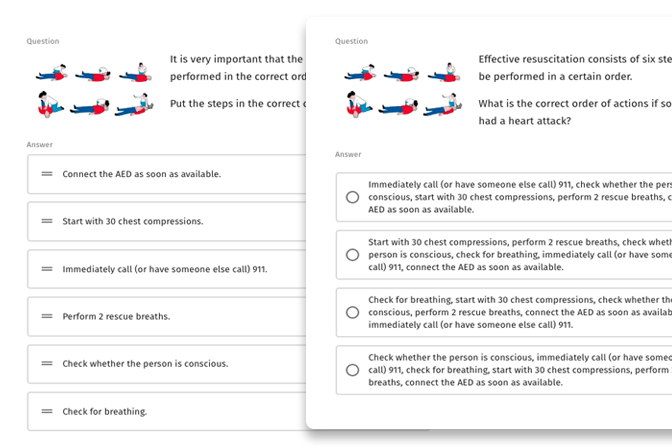In depth: the 10 Drill Design Principles
Blog / News | 22-10-19
To all instructional designers,
Making good instructional drill questions is definitely not an easy task. With our 10 drill design principles, we will help you get started designing perfect drills. We wrote down the most important principles and why they are relevant for making good questions. Also, we provide some examples from real drills that show you how it is done. Click on the principles to check out the entire story.
1. Cut learning material up into short drills
Cut your learning material up into small chunks. Microlearning is effective and motivates learners.
2. Limit drills to crucial need-to-know information
Focus on information that people really need to remember. Use drills to anchor crucial knowledge.
3. Engage the learner by using a story
Focus on information that people really need to remember. Use drills to anchor crucial knowledge.
4. Process one learning element per question
Limit each question to one piece of information that people need to remember. Especially for adaptive learning, short and relevant questions are the most effective.
5. Incorporate the information to remember into the answer
Drills are assessment-based: learning by answering questions and remembering feedback. Incorporate the message people need to remember in the answers.
6. Use positive feedback: explain which answer is correct
Use the feedback option to explain answers. This will help people grasp and remember the material quickly.
7. Alternate question styles and answer styles
Use different types of questions and answers, such as open-ended, multiple-choice, hotspot and sequence questions. Also use images, videos and audio clips.
8. Use question variants to optimize the learning effect
When you ask about one and the same learning element in different ways, you will make sure the information is processed actively and, therefore, remembered better.
9. Keep drills challenging
Set learning goals for drills and courses to make sure people brush up on time. Also, add the latest information to keep your drills up to date.
10. Communicate and motivate
Optimize learners’ commitment by keeping them motivated. Communicate why drills are so important.
These tips and tricks will have you making the best possible questions, based on educational design principles. This way you can achieve an effective learning process and solidly anchored knowledge.
Good luck. And if you need additional help, do not hesitate to give us a call!
Drillster. Learning with you.

